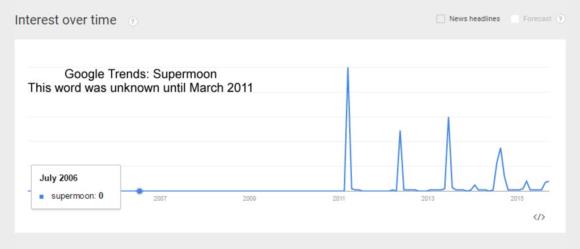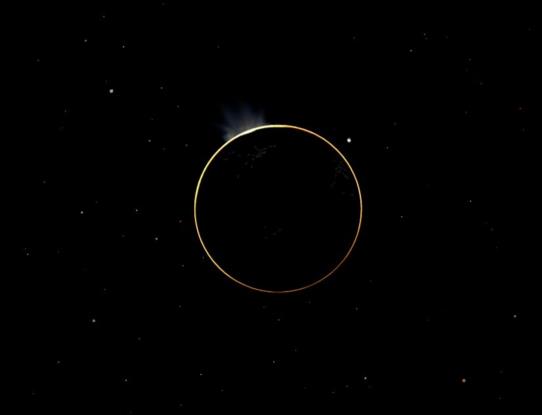
NavList:
A Community Devoted to the Preservation and Practice of Celestial Navigation and Other Methods of Traditional Wayfinding
From: Frank Reed
Date: 2015 Sep 28, 20:59 -0700
Randall Morrow, you wrote:
"Would a look in the almanac at the semidiameter for the "super moon" and a regular moon say a month ago show the difference?"
Sure. Lunar perigee has been with us since the dawn of astronomy. Celestial navigators have actively used the varying values of the Moon's diameter since the late 18th century. That's not in doubt. The problem is that the expression supermoon is being used for sensationalism. It is absolutely not something that casual observers can see, nor does it have any interesting impact on a lunar eclipse! It is simply irrelevant hype. Also, bear in mind that this word supermoon has been in use for only four years, and that usage is thanks to a stupid (genuinely stupid) coincidence and a horrible tragedy. It's all rather grotesque.
Here are two images to ponder. One image shows Google Trends data for the word "supermoon". As you can see, it existed at un-measurable levels before March, 2011 when the aforementioned stupid coincidence occurred. Since then it has been used and abused by everyone who needs hits for a science-themed web site. The supermoon is not an astronomical phenomenon; it is a social media phenomenon. The second images is my attempt to show the appearance of the Earth as seen from the surface of the Moon during the lunar eclipse. It's a brilliant orange ring... That's what makes the Moon look a bit red in mid-eclipse.
Frank Reed








